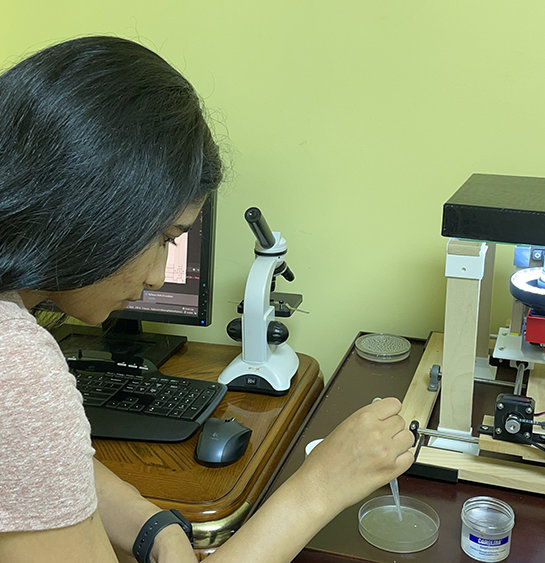Deeper Dive
Microscopy is something that is used in many scientific research fields, and it is often hard for humans to observe organisms for long periods of time due to their fast movement and the high magnification. I experienced this first-hand in my biology class while observing pond microorganisms. To solve this issue, I developed the tracking microscope. The tracking microscope is essentially a custom microscope attached to a three-axis actuator and allows for autonomous tracking of microorganisms. On the hardware side, to power the actuator, three stepper motors and an Arduino Uno with a CNC Shield are used. To control the actuator and track the organisms, I developed a custom Python script. The code utilizes OpenCV to track the organism that the user selects and uses the tracking data to compensate for the organism’s movement using the actuator. On the optics side, I designed a custom digital microscope which has an average FPS of 100 and provides 1080p resolution video. In addition to basic tracking, the tracking microscope provides valuable trajectory and video data which can be used for further analysis and is low cost. During testing, the tracking microscope tracked a variety of organisms such as a Tardigrade, Blepharisma, Actinosphaerium, and Stentor.
Throughout my work on the tracking microscope project, I have had the help and support of the Bhamla Lab at Georgia Tech. Before the pandemic, I aimed to conduct my research in-person at Georgia Tech. However, I had to transition to working at home, but was still able to continue my research as the Bhamla Lab sent me research materials and parts.
I see the tracking microscope improving the lives of those wishing to pursue advanced science. With this low-cost tool, students will be able to conduct research on organisms and behaviors that previously couldn’t have been done with a traditional microscope. Access to this technology will give students a chance to learn more and further their interest in STEM.



